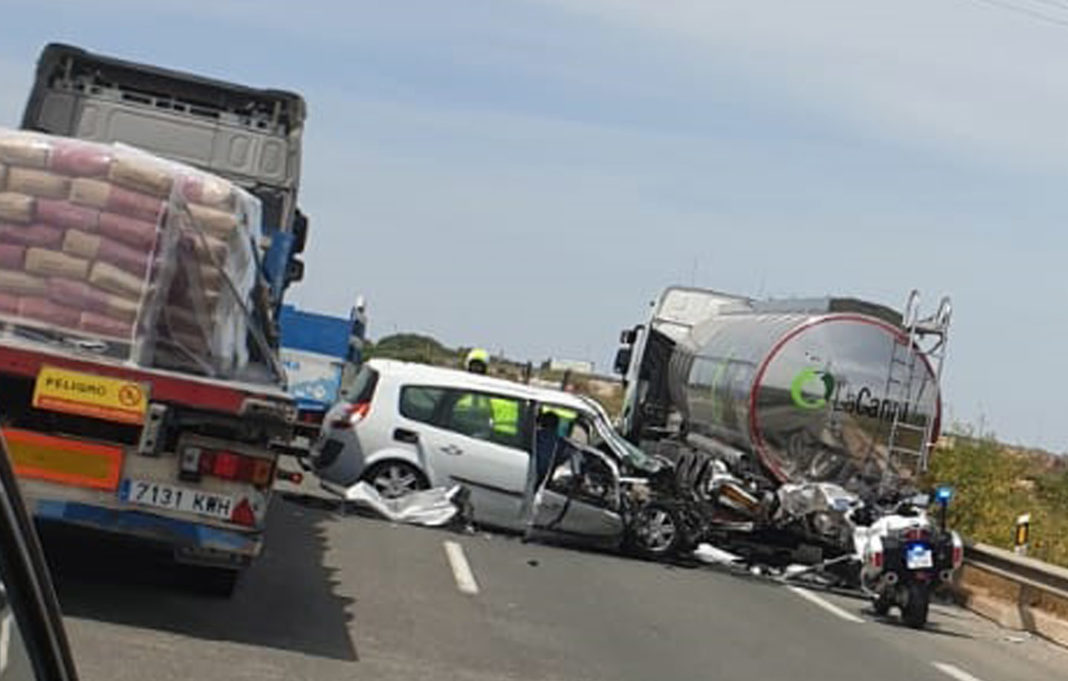Road travel has exceeded pre-pandemic levels this summer, 22% of those who died in cars or vans were not wearing a seat belt at the time of the incident and, of the total number of deaths, vulnerable users accounted for 41%.

225 people have died in road traffic incidents in Spain during the months of July and August, 10 more fatalities (4.65%) than in 2019, the statistical reference year, while displacements have increased by 2.42% (+2.2 million) compared to that summer.
These data have been released this Monday by the Minister of the Interior, Fernando Grande-Marlaska, at a press conference in which he has been accompanied by the Undersecretary of the department, Isabel Goicoechea, by the Director General of Traffic, Pere Navarro, and by the chief general of the Guardia Civil Traffic Group, José Ignacio Criado.
“These are not good data. In terms of road accidents, they never are. We are going to continue with the agenda set out in the 2030 Road Safety Strategy, which includes the measures that should allow us to reduce traffic accidents and their dramatic consequences,” said the minister.
During the months of July and August there were 93.4 million trips, 2.42% more than in the summer of 2019. Specifically, in July there were 45.3 million, 4.53% more than in July 2019, and in August, 48.1 million, 0.51% more than those registered in August 2019.
The day with the highest number of trips was Friday, August 12, with 1.8 million trips, and the day with the least mobility was Saturday, July 9, with 1.2 million.
In addition, Operation Crossing the Strait has been resumed, after two years of interruption due to the pandemic, and in the framework of which 624,662 vehicles travelled by road in the country. In addition, another 270,760 vehicles crossed Spain to Portugal.
X-ray of incidents
As for the data by month, during the month of July there were 119 fatal incidents in which 128 people died, which is 11 more deaths than in July 2019. The day with the highest number of fatalities was Thursday 13 July with 11 deceased.
In August there were 92 fatal incidents in which 97 people died, 1 less than in the same month of 2019 and becoming the fourth consecutive year with less than 100 deaths in that month.
By type of road, three out of every four deaths have taken place on conventional roads without separation of directions (173). On highways and motorways, there have been 52 deaths.
By means of displacement, deaths have increased in all media, except for motorcycle and van users.
The profile of the deceased motorcyclist is that of a man between 35 and 44 years old, who has an incident on a weekend, on a conventional road.
Regarding pedestrians, of the 19 deaths, 8 have occurred on motorways and dual carriageways and 11 on conventional roads. In addition, 15 of the deceased pedestrians were at night or in the twilight, of which 11 were not wearing reflective clothing.
The decrease in incidents among motorcyclists has meant that the number of vulnerable users who died out of the total is 41%, the lowest percentage in the last four years.
By type of incident, the exit of the road continues to be the incident that registers the most fatalities, 40% with 91 deaths, followed by the frontal collision (23%) with 52 deaths
By sex and age, 81% of the deceased are men and 19% women.
The number of deaths in the age group between 35 and 44 years increased with 43 deaths, 10 more than in 2019. Those between 55 and 64 years of age and 65 and over also increased with 43 and 42 deaths, respectively.
Regarding security systems, 22% of those who died in cars or vans were not wearing a seat belt at the time of the incident (21 deaths), a lower percentage than in previous years. Neither did 2 of the 52 deceased motorcyclists and 1 of the 7 bike users use a helmet.
Provisional information
The information used to prepare the report is provisional data on road incidents that occurred in the months of July and August. The calculation of deaths is carried out during the 24 hours following the incident and the information has been provided by the agents in charge of surveillance and traffic control and by the autonomous services with competences in the matter.





